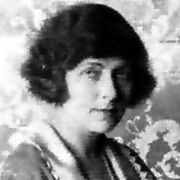Related Research Articles

New Zealand cinema can refer to films made by New Zealand-based production companies in New Zealand. However, it may also refer to films made about New Zealand by filmmakers from other countries. Due to the comparatively small size of its film industry, New Zealand produces many films that are co-financed by overseas companies.

New Zealand literature is literature, both oral and written, produced by the people of New Zealand. It often deals with New Zealand themes, people or places, is written predominantly in New Zealand English, and features Māori culture and the use of the Māori language. Before the arrival and settlement of Europeans in New Zealand in the 19th century, Māori culture had a strong oral tradition. Early European settlers wrote about their experiences travelling and exploring New Zealand. The concept of a "New Zealand literature", as distinct from English literature, did not originate until the 20th century, when authors began exploring themes of landscape, isolation, and the emerging New Zealand national identity. Māori writers became more prominent in the latter half of the 20th century, and Māori language and culture have become an increasingly important part of New Zealand literature.

The North Shore is one of the major geographical regions of Auckland, the largest city in New Zealand. The area is defined as the northern shores of the Waitematā Harbour as far north as the Ōkura River.

South Auckland ) is one of the major geographical regions of Auckland, the largest city in New Zealand. The area is south of the Auckland isthmus, and on the eastern shores of the Manukau Harbour. The area has been populated by Tāmaki Māori since at least the 14th century, and has important archaeological sites, such as the Ōtuataua stonefield gardens at Ihumātao, and Māngere Mountain, a former pā site important to Waiohua tribes.

The following lists events that happened during 1910 in New Zealand.

Kauri gum is resin from kauri trees, which historically had several important industrial uses. It can also be used to make crafts such as jewellery. Kauri forests once covered much of the North Island of New Zealand, before early settlers caused the forests to retreat, causing several areas to revert to weeds, scrubs, and swamps. Even afterwards, ancient kauri fields and the remaining forests continued to provide a source for the gum. Between 1820 and 1900, over 90% of Kauri forests were logged or burnt by Europeans.

Opo was a bottlenose dolphin who became famous throughout New Zealand during the summers of 1955 to 1956 for playing with the children of the small town of Opononi on the Hokianga harbour.
Rudall Charles Victor Hayward was a pioneer New Zealand filmmaker from the 1920s to the 1970s, who directed seven feature films and numerous others.

The Betrayer is a 1921 Australian-New Zealand lost film from director Beaumont Smith about an interracial romance between a white Australian man and a Māori girl.
Rudd's New Selection is a 1921 Australian silent film directed by Raymond Longford based on the Dad and Dave stories by Steele Rudd. It is a sequel to On Our Selection (1920). The plot concerns the marriage of Dave Rudd and introduces a sister, Nell.

My Lady of the Cave is a 1922 New Zealand silent film which was the first feature from Rudall Hayward. It was based on a popular story by H. T. Gibson, which was published serially in several newspapers.

Rewi's Last Stand is the title of two feature films written and directed by pioneering New Zealand filmmaker Rudall Hayward: a 1925 silent movie, and a 1940 remake with sound. They are historical dramas, based on the last stand of Rewi Maniapoto at the Battle of Ōrākau.
The Bush Cinderella is a 1928 silent New Zealand film starring Dale Austen, the second Miss New Zealand.

On the Friendly Road is a 1936 film from New Zealand which told a story of New Zealand in the depression. It was made in and around Auckland, using local actors and locally-made cameras.
To Love a Maori is a 1972 New Zealand film about an interracial romance. It was the seventh and last feature from Rudall Hayward.
Ian Barry Brickell was a New Zealand potter, writer, conservationist and founder of Driving Creek Railway.
The Birth of New Zealand is a 1922 New Zealand film which depicts key events in New Zealand history. Directed by Harrington Reynolds who also starred, other New Zealand pioneer filmmakers Ted Coubray and possibly Rudall Hayward were also involved. Episodes depicted include ancient Maori wars, Captain Cook's landing and the signing of the Treaty of Waitangi.

Patricia Rongomaitara "Ramai" Hayward was a New Zealand photographer, actor, and filmmaker who made films in five countries. Her film career began in 1940 when she co-starred in the historical movie Rewi's Last Stand, after meeting her future husband, legendary New Zealand director Rudall Hayward. The first Māori cinematographer, she spent three years making films in England with Rudall. Later the couple were the first to make English language films in China after the communist revolution.

Hilda Maud Hayward was a pioneering New Zealand filmmaker. She is considered the country's first female camera operator.
The Te Kooti Trail is a 1927 New Zealand historic drama film about Te Kooti, based on a newspaper serial written by Frank Bodle. This silent film is described as New Zealand's first docudrama and was created by husband and wife team Rudall and Hilda Hayward.
References
- 1 2 3 4 Shelton, L. R. (1998). "Hayward, Rudall Charles Victor - Biography". Dictionary of New Zealand Biography . Hosted by Te Ara - the Encyclopedia of New Zealand. Accessed 18 December 2020.
- ↑ "Screen-Struck Sirens". Papers Past . No. 863. New Zealand Truth. 10 June 1922. p. 1. Retrieved 20 January 2023.
- ↑ "The Bloke from Freeman's Bay". Papers Past . Kaipara and Waitemata Echo. 8 December 1921. p. 2. Retrieved 20 January 2023.
- 1 2 Harker, Caroline (2013). "Humour - Developing a national sense of humour, 1900–1970". Te Ara - the Encyclopedia of New Zealand . Retrieved 20 January 2023.
- ↑ "Local and general news". Papers Past . New Zealand Herald. 10 December 1921. p. 8. Retrieved 14 July 2014.